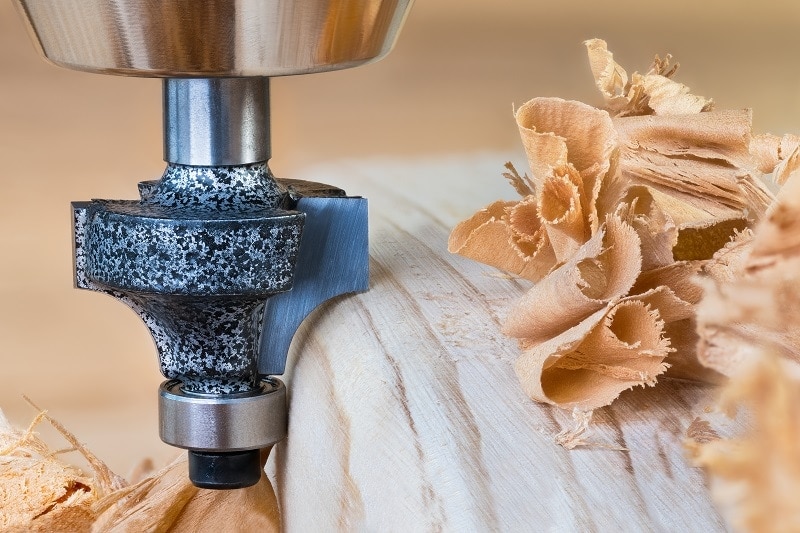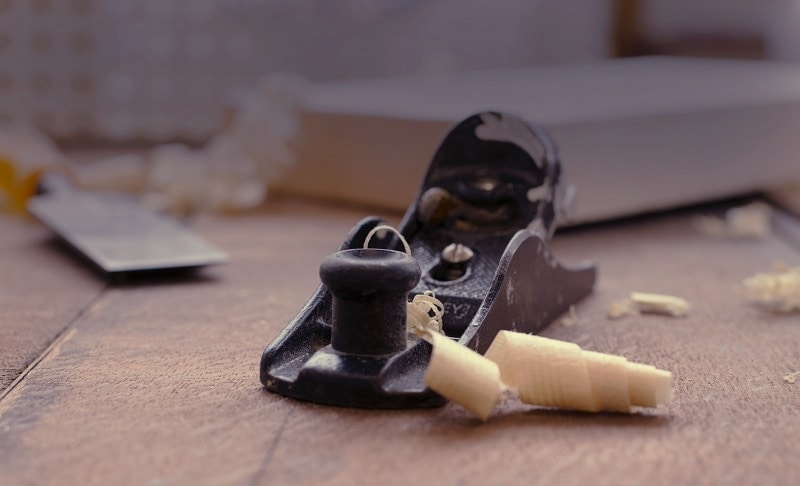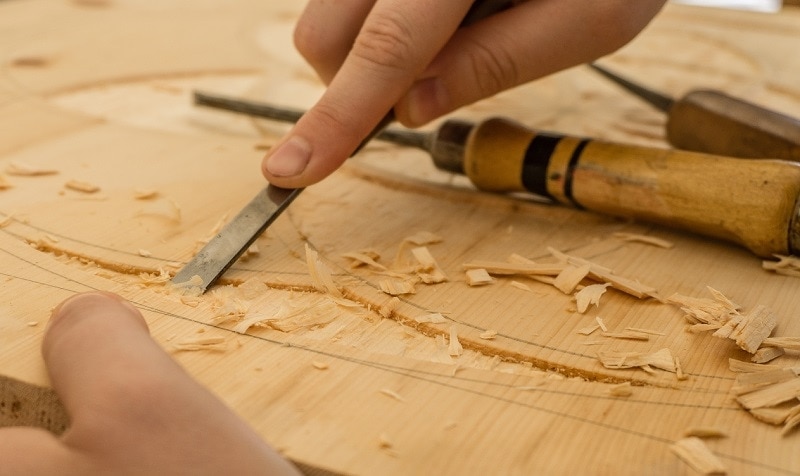How to Round Wood Edges Without a Router: 4 Simple Methods
-
Pete Ortiz
- Last updated:

Although a router is not the most expensive tool available, buying one is an expense that many of us could do without. This is especially true if you are not a professional carpenter or woodworker. Paying $100 for a tool that you will use every few years—and for a job that can be done rather easily without a router—is money that could be better spent on something else.
With that said, of course, rounded edges do offer a professional finish. Creating pieces with rounded edges rather than sharp ones is safer for you, your kids, and your pets. Painting a rounded edge also gives a better and more uniform look, and a rounded edge is less likely to break off or blunt if you drop it or bump into it.
Whatever method you use, whether it is using a hand plane, a chisel, and sandpaper, or even a router, the aim is to create a basic rounded shape to get rid of the sharp edges, and then to smooth it down to achieve the finish you want.
Let’s take a look at the most viable alternatives to rounding wood edges when you find yourself without a router.
4 Simple Methods for Rounding Wood Edges Without a Router
1. The Hand Plane

The hand plane is the most effective method of creating round edges without using a router. One can strip away a lot of waste material in a relatively short period. It also allows for some precision work and it can be used to create a beautiful chamfer. However, you will need more than just a hand plane for this job. You will need sandpaper to ensure that the wood is smooth once the project is complete.
Choose Your Hand Plane
The hand plane is the most important part of the smoothing process, and there are several types to choose from.
- Block Plane: ideal for thin pieces of wood
- Jack Plane: a jack-of-all-trades, ideal for short and long workpieces
- Jointer Plane: used for larger boards
- Smoothing Plane: can be used to smooth almost any type and size of surface
If you have one already, you may be able to use your existing hand plane to get a perfectly smooth and rounded edge on your next piece.
Cut to 45°
Use the plan and cut your first chamfer at 45°. You don’t have to strip much of the wood away before it will have an impact. Keep stripping the wood away until you have removed most of the waste wood. Round the tool as you plane, because this will smooth the corner, rather than leaving you with two edges.
Plane the Chamfer Edges
Once you’ve created your chamfer edges, you can plane the new edges down. This will give you the basis of a rounded edge, although it will be several straight edges.
Smooth the Corners
Get good quality sandpaper and sand the edges you have created. Try to angle the sandpaper so that it curves around in the shape you want the wood, and then initially concentrate on the newly sharpened edges you have created.
Other Tools
If you don’t have a plane, but you do have a selection of other tools laying around, you can use one of the following methods to achieve a similar result.
2. Using a Chisel

Ensure that you use a very sharp chisel, and take your time to remove the sharp edges of your workpiece before swapping over to sandpaper for the end. A chisel will remove a lot of wood, but it is not as precise or accurate as a hand plane. It can give a rougher-looking finish.
3. Creating Round Edges With a File
A wood file is not as effective at removing large volumes of wood, but it is more effective than even the coarsest sandpaper. If you just want to get rid of current sharp edges, without creating a chamfer or a truly rounded edge, a file could be your best approach. It will not strip away large slices of wood, but it will give you a smooth finish sooner, compared to using a sheet of sandpaper. Rub the file against the edge, working from one side to the other. As you get close to the finished shape, use the file to remove any remaining tool marks and then swap over to sandpaper for the very last bit of smoothing.
4. Use Sandpaper
Sandpaper may not be the most effective or efficient method of removing wood, but it will smooth sharp edges down. Just know that it will take longer, the process will be much slower, and you are unlikely to be able to strip large edges away quickly.
Use a sanding block, and sand at an angle of 45°. Once you’ve got the initial shape, sand by hand so that you can round over the edge a little and get a better shape to the finish.
Round Wood Edges Without a Router
Sharp edges can be a hindrance. They can snag on the carpet and other surfaces, they can cause injury and upset if you or any family member walks into them, and they simply don’t give the same finish or professional look as well-rounded and smoothed edges do. While a router rounds and smooths edges quickly, efficiently, and accurately, unless you have a regular call for this type of tool, it is an expensive addition to your home toolbox—especially when a hand plane and sandpaper can do the job almost as well.
Featured Image Credit: KPixMining, Shutterstock
Contents


